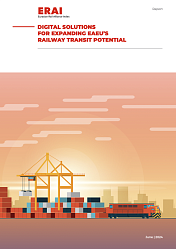Demurrage and detention charges imposed on shippers by containers lines have soared at unprecedented rates globally over the last year — more than doubling, on average, at the world’s 20 largest container ports — according to the Demurrage & Detention Benchmark 2021 report published today by Container xChange, a leading global online platform for the leasing and trading of shipping containers.
However, the rates are «hugely inconsistent», with large differences apparent both by port and by carrier, the new annual report highlighted, varying from just $132 at Busan in South Korea to more than $2,500 two weeks after discharge at the Port of Long Beach and neighbouring Los Angeles.
Across the world’s 20 largest container ports, the report found that average Demurrage and Detention (D&D) fees levied by container lines on customers two weeks after a box was discharged from the vessel more than doubled across ports and shipping lines between March 2020 and March 2021, climbing 104% or the equivalent of $666 per container across all container types. None of the world’s top 20 ports by throughput saw a decrease in D&D fees over the period.
On average, D&D charges in March this year were $720 per box across standard container types two weeks after the box discharge from the vessel. Demurrage fees are charged when a container is left inside a container terminal beyond the allowed number of free days, while detention is a charge for extended use of the container until it is returned empty to the shipping line.
More than 20,000 data points
To compile the report, Container xChange collected more than 20,000 data points from publicly available sources. These were used to compare D&D rates imposed on customers by the world’s ten largest shipping lines across the world’s top-20 container ports. The data was then compared against data collected by Container xChange in March 2020.
Some of the biggest percentage rises were in China, where the ten leading Chinese ports experienced a 126% increase in average D&D charges from March 2020 to March 2021. Qingdao saw the biggest rise in D&D rates, up 194% year-on-year, followed by Dalian where shippers suffered an average increase of 187%.
However, D&D charges in China remain far lower than in many other leading ports with seven of the top 10 cheapest ports located in the country. By contrast, average D&D fees two weeks after discharge at the Port of Long Beach in March were $2,638 — the most expensive in the world. In second place was neighbouring Los Angeles at $2,593.
Fees under scrutiny
Johannes Schlingmeier, CEO and founder of the Container xChange container leasing and trading platform, commented: «In the US, the Federal Maritime Commission is now looking into the practices of the container shipping industry and searching for ways to ensure that container users, many of whom feel they have been charged unfairly by carriers for D&D, can be refunded. Certainly, D&D rates have been accelerating, adding to the burden on shippers and industry on top of record container rates and global container shortages.»
At the bottom of the spectrum was Busan (South Korea) with average D&D charges of only $132 in March this year. Next cheapest after the South Korean port were the Chinese ports of Dalian and Tianjin both with averages of $201.
Major container ports towards the middle of the range include Rotterdam with an average D&D rate in March of $756, Singapore at $615, and Antwerp at $709.
Variations by carrier within ports
The report highlights that D&D charges do not just vary by port, «they also vary by shipping line within each port. At the port of Los Angeles, which has been central to the chaos evident on the transpacific container trade over the past year, average D&D charges increased by 142.7% from March 2020 to March 2021.» At Los Angeles, CMA CGM’s D&D rates increased the most, up 167% over the period. Maersk was a close second, with its customers seeing a 161% increase in D&D charges, the report noted.
By contrast, Cosco, unlike the other carriers in the Port of Los Angeles, lowered its average D&D fees by 15% over the period from $1,417 in March last year to 2020 to $1,213 in March 2021.
In Hamburg, meanwhile, the cheapest carrier in March this year was CMA CGM, which charged $258 in D&D after two weeks. Yang Ming was the most expensive line with rates of $1,612, the report noted.
Globally, the cheapest combination of carrier and port was Cosco and the Port of Busan in South Korea. The most expensive combination was CMA CGM at the ports of Long Beach and Los Angeles, the study highlighted.
Container xChange co-founder Christian Roeloffs commented: «Demurrage and detention prices have always been an area of conflict between shippers and carriers and that tension has reached a new level this year as costs have spiralled.
«The key to minimising D&D is to create transparency around the fees. With shippers informed about the costs associated with D&D, they’ll be able to make business decisions and enter negotiations informed of the accurate costs and per diems. We hope this report gives all parties increased transparency.»




